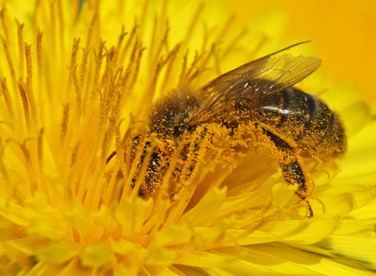How plants make sure their pollen gets delivered to the right place
By CAROLINE EDWARDS

Plants can specialize a pollinator “niche” to minimize the amount of pollen sent to the wrong species (nutmeg66 / flickr)
Bees, butterflies, and bats are important for plant reproduction because they move pollen from one flower to another. But if a pollinator visits flowers from different species, how do plants make sure their pollen gets to a flower of the same species, a crucial step in making seeds?
One way is through differential pollen placement. This is when each plant species uses only a specific area of the pollinator’s body to transport its pollen. By specializing their pollinator “niche”, that is, the way they use the pollinators as a resource to move pollen, the plants can minimize the amount of pollen sent to the wrong species. In other words, if the pollen is a piece of mail and the pollinators are the mail carriers, the plants can address their mail instead of handing over a blank envelope and hoping it gets to the right recipient.
A group of researchers have studied this process for several plant species in Thailand that all bloom together at night and are pollinated by the same type of nectar bat. The scientists caught hundreds of nectar bats, swabbing four parts of their body for pollen: the top of their head, face, chest, and underside of the wing.
They found that each plant species was placing pollen on a precise body region of the bat, showing differential pollen placement was happening in this plant community. They also showed that the pollen stayed in those locations throughout the entire night, despite bats moving around and grooming.
This helps us better understand how different plant species coexist, and make sure their pollen gets to the right place!
We are here to share current happenings in the bee industry. Bee Culture gathers and shares articles published by outside sources. For more information about this specific article, please visit the original publish source: How plants make sure their pollen gets delivered to the right place | A Moment of Science – Indiana Public Media








